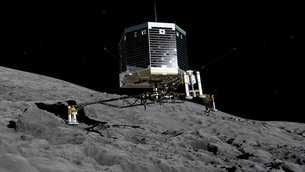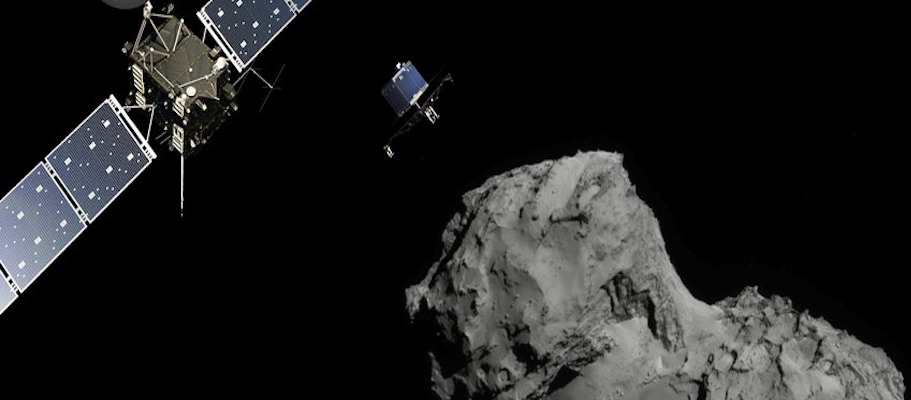The next hour will be nail-biting exciting for the European Space Agency, which is about to land a rover called Rosetta on a comet in deep space.
The first in history to rendezvous with a comet, Rosetta has been journeying since 2004 traveling 310,000,000 miles (500M km) to finally arrived at Comet 67P 98 days ago.
The lander, weighing 220 pounds, has already collected valuable scientific data and will deploy to the comet’s surface in the next hour.
You can follow the ESA’s live press conferences, along with thousands of schools and universities around the world, streaming online at Rosetta.esa.int.
UPDATE: At 10am EST, the European Space Agency received confirmation of the successful touchdown of the lander, Philae, on the comet’s surface.
“With Rosetta we are opening a door to the origin of planet Earth and fostering a better understanding of our future. ESA and its Rosetta mission partners have achieved something extraordinary today,” said ESA’s Director General.
“After more than 10 years travelling through space, we’re now making the best ever scientific analysis of one of the oldest remnants of our Solar System,” said Alvaro Giménez, ESA’s Director of Science and Robotic Exploration.
“In the next hours we’ll learn exactly where and how we’ve landed, and we’ll start getting as much science as we can from the surface of this fascinating world.”
 Over the next 2.5 days, the lander will conduct its primary science mission, assuming that its main battery remains in good health. Depending on conditions, the mission could last until March 2015, after which conditions inside the lander are expected to be too hot for it to continue operating.
Over the next 2.5 days, the lander will conduct its primary science mission, assuming that its main battery remains in good health. Depending on conditions, the mission could last until March 2015, after which conditions inside the lander are expected to be too hot for it to continue operating.
Science highlights from the primary phase will include a full panoramic view of the landing site, including a section in 3D, high-resolution images of the surface immediately underneath the lander, on-the-spot analysis of the composition of the comet’s surface materials, and a drill that will take samples from a depth of 23 cm and feed them to an onboard laboratory for analysis.
“Rosetta is trying to answer the very big questions about the history of our Solar System. What were the conditions like at its infancy and how did it evolve? What role did comets play in this evolution? How do comets work?” said Matt Taylor, ESA Rosetta project scientist.
Photo by ESA




















